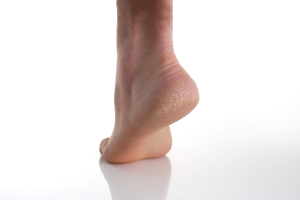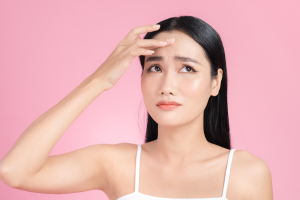

Also known as Alopecia, hair loss is a condition that affects a lot of people throughout the world. One of the main hair fall reasons as to why this happens is the weakening of the hair follicles due to the actions of the immune system. However, alopecia is not limited to just the head. This condition has different types based on where it occurs.
Types of Alopecia
There are three types of alopecia:
- Alopecia Universalis: In some cases, there has been a significant loss of hair in eyelashes, eyebrows as well as other body parts. The total and complete loss of hair in such situations is referred to as Alopecia Universalis. The extent of damage that occurs in such cases varies from individual to individual, causing eventual baldness.
- Alopecia Areata: While Alopecia may develop within both males and females, men are at a higher risk of developing this condition. Hairfall in men can cause them to lose a significant amount of hair in their chest, scalp, and back. This type of hair loss can also happen in small patches and is known as Alopecia Areata. It is relatively similar to male pattern baldness wherein there is a gradual thinning of hair causing hairline receding, giving a patchy texture to the head.
- Alopecia Totalis: Alopecia Totalis involves a complete hairloss on scalp. A small number of people dealing with Alopecia Areata can get affected by this condition. Predicting an outcome is difficult owing to the uncertainty of this condition.
Symptoms of Alopecia
Given below are some of the symptoms experienced by those diagnosed with Alopecia:
- Thinning On Top Of Head: This form of Alopecia is one of the most common types of hair loss, especially with male pattern baldness. It is characterised by a hairline receding on the top of the forehead in men and becomes more defined as they age. As for women, this causes gradual baldness in the part of their hair. Women in particular experience a condition called frontal fibrosing Alopecia, which is characterised by hairline receding.
- Patchy Bald Spots: Commonly experienced by patients diagnosed with Alopecia Areata, this is a symptom wherein people experience balding hair in circular or coin-shaped patches. The erratic loss of hair in such cases can end up causing skin irritation for some people. Disorders such as eczema can also be a marker of balding hair in certain cases.
- Erratic Loosening Of Hair: Also known as Telogen Effluvium, this is a type of baldness caused by a sudden physical or mental shock. It often stems as a result of traumatic experiences, causing your hair follicles to go into a state of shock. Telogen Effluvium may be temporary in some cases but it can also manifest permanently if not taken care of right away. A physical or emotional shock can cause hair to loosen. Telogen Effluvium is different from Alopecia Areata since it is primarily a temporary loss of hair and can be reversed under the right conditions.
- Complete Loss Of Hair: There are certain cases in which people experience a total state of baldness throughout their bodies. This condition is often a result of certain treatments such as chemotherapy which completely eradicate hair follicles.
Causes Of Hair Fall
Given below are some of the primary causes of hair fall experienced by people diagnosed with Alopecia:
- Genetics: Having a family history of baldness is one of the most common causes of hair fall. A certain chromosome carrying the baldness factor is genetically passed down to the descendants, causing a significant loss of hair due to aging. This particular condition is called androgenic Alopecia and is commonly manifested in the form of male pattern baldness for men. It also affects women via female pattern baldness and is usually found in predictable bald spots emerging on the crown of the scalp.
- Changes In Hormones: There may be certain cases in which the body undergoes a change in hormones – one of the more common causes of hair fall. This could be due to a number of hair fall reasons such as pregnancy, childbirth, the onset of menopause, or even problems related to the thyroid. A variety of conditions can cause permanent or temporary hair loss, including hormonal changes due to pregnancy, childbirth, menopause, and thyroid problems. Other hair fall reasons include scalp infections such as ringworm and disorders like trichotillomania.
- Medications: One of the most common reasons for hair loss is the supplementation of certain topical steroids and drugs used for the treatment of conditions like high blood pressure, depression, gout, and arthritis. Another reason why you could develop a hair fall problem is the exposure of the head to radiation therapy, which can damage the cells.
- Hairstyles: One of the most common hair fall reasons in females is excessive styling of hair, wherein certain hairstyles such as pigtails end up putting too much pressure on the hair follicles, causing the hair to fall out. Other hair loss causes include hot oil treatments which can not only damage your hair follicles and cause Alopecia but also induce skin complications such as permanent scarring.
Prevention Of Alopecia
While most of the baldness experienced by people is due to factors such as genetics and the onset of male and female pattern baldness, there are certain steps that you can take to ensure that you do not end up with the preventable forms of Alopecia.
- Avoid using cosmetic appliances such as hot rollers, curling irons, hair straighteners, and rough combs which can cause more stress on your hair. Learn to be gentle with it and use detanglers to get rid of tangled hair and split ends. Especially avoid brushing your hair when it’s wet, and always invest in a wide-toothed comb. Make sure to stay away from rubber bands and forms of hairstyles that can end up putting too much pressure on your hair.
- Include any vitamin for hair loss such as a biotin supplement in your daily diet to improve the stimulation of hair follicles and boost the growth of hair. However, you must also make sure to consult with your healthcare practitioner before including any vitamin for hair fall in your daily diet.
- Make sure to limit your exposure to direct sun and protect your hair from its harmful ultraviolet rays. In case you do need to go out, protect your hair using a cap or a hat.
- Drinking and smoking excessively have been shown to be a huge factor for hairfall in men. If it is not possible for you to completely stop smoking, at least make sure to keep it to a minimum to avoid complete loss of hair.
Conclusion
If you are someone who is suffering from Alopecia, regardless of genetic or non-genetic factors, there are several options for treatment that are available in the market today. There have been successful cases of transplants wherein complete hair growth was restored. Make sure to check with your medical health practitioner and explore your options for the right kind of treatment for hair fall.





I am having heavy hair fall by making only one line on my head, and of the starting of it, it’s getting bald. And I hope it’ll recover soon .
I don’t no what happen my hair fall